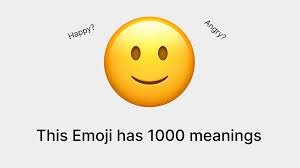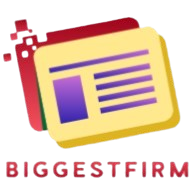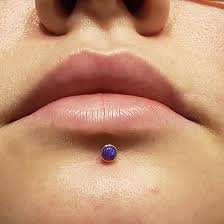Mewing Emoji A Deep Dive into the Viral Digital Trend

The digital world is a playground of trends, memes, and evolving subcultures that seem to appear out of nowhere. One of these viral phenomena is the mewing emoji, a combination of emojis that serves as a visual shorthand for a popular yet controversial technique: mewing. Over the past few years, mewing has become a significant trend in online communities, especially within the realms of fitness and aesthetics. However, it’s the mewing emoji that has taken this practice to new heights by transforming the way people communicate their dedication to self-improvement through a combination of seemingly unrelated emojis.
In this article, we’ll explore the mewing emoji, its origins, meaning, and how it has grown from a niche expression of facial aesthetics into a viral meme that reflects both the internet’s love for transformation and its ability to adapt even the most niche concepts into mainstream digital communication. From its inception to the present, this emoji has captured the imagination of millions, becoming a cultural touchstone in internet culture.
The Mewing Emoji: A Visual Representation of Silent Transformation
To understand the mewing emoji, we need to first delve into the concept of mewing itself. Mewing is a technique developed by orthodontist Dr. John Mew, which advocates for the proper positioning of the tongue against the roof of the mouth. According to proponents, this practice is believed to enhance the appearance of one’s jawline and facial structure over time, particularly when done consistently. Though the medical community remains skeptical of its claims, mewing has found a passionate following online, with countless individuals claiming visible improvements.
The mewing emoji itself often consists of a combination of emojis that symbolize both the practice of mewing and the quiet discipline it requires. The most common emoji combination includes:
- 🤫 (Shushing Face): This emoji conveys the idea of silence and focus, both of which are essential in the mewing process. It suggests that to successfully practice mewing, one must do so quietly, without drawing attention to their efforts.
- 🧏♂️ (Deaf Man): This emoji adds another layer of meaning by symbolizing the quiet determination and commitment involved in mewing. It reflects the idea of being so engrossed in the process of transformation that you metaphorically “tune out” distractions, just as the deaf emoji can be interpreted as tuning out external noise.
Together, these two emojis form the mewing emoji, which has become an icon of online self-improvement culture.
How the Mewing Emoji Became a Digital Trend

The rise of the mewing emoji can be traced back to the growing popularity of mewing itself. While Dr. John Mew’s original concept was intended for orthodontic purposes, the technique quickly gained traction on social media platforms such as Reddit, TikTok, and Instagram. As users began sharing their “jawline transformation” stories and videos, mewing quickly became a self-improvement trend, with many influencers and enthusiasts showcasing their progress.
It wasn’t long before people started incorporating the mewing emoji into their social media posts, creating a humorous yet dedicated visual representation of their mewing journey. The combination of the shushing face and deaf man emojis became a shorthand for the quiet discipline and silent transformation that defined the mewing practice. For many, it became a fun and relatable way to engage with the trend without needing to explain it in detail.
Meme culture played a significant role in the evolution of the mewing emoji. As is often the case with internet trends, what started as a niche, serious practice quickly transformed into a more lighthearted and meme-driven phenomenon. The mewing emoji became a popular visual tool for users to either express their commitment to self-improvement or mock the perceived seriousness of the mewing trend. Some even began using it ironically, exaggerating the idea of a “transformation” to create humorous or satirical content.
The Appeal of the Mewing Emoji in Internet Culture
The mewing emoji encapsulates several trends that are prevalent in modern internet culture, making it particularly appealing to a wide audience. Here are a few reasons why the mewing emoji has gained such widespread popularity:
1. Symbol of Self-Improvement
In an age where personal development, self-improvement, and fitness are central to many people’s online identities, the mewing emoji is a natural fit. It reflects the growing obsession with improving one’s appearance, especially in an online environment where visuals and aesthetics are paramount. Whether it’s for better jawlines, clearer skin, or leaner physiques, the emoji symbolizes dedication to improving oneself, silently and without fanfare.
2. Memes and Humor
At its core, internet culture thrives on humor, especially irony. The mewing emoji has been adopted by meme creators who exaggerate the transformation process, turning a seemingly serious self-improvement practice into a lighthearted joke. The idea of focusing intensely on something as subtle as tongue posture—and then using emojis to communicate this focus—adds an element of absurdity, which internet users find amusing. The mewing emoji thus functions as a tool for self-improvement memes, making it a perfect fit for meme-driven social media platforms like TikTok and Twitter.
3. Aesthetic Culture
Aesthetics play a huge role in the digital world. The rise of influencers who focus on visual beauty has led many people to seek ways to enhance their physical appearance. Mewing fits perfectly into this trend, as it presents a natural, non-invasive way to supposedly improve facial features. The mewing emoji acts as a badge for those who are dedicated to aesthetic transformations, signaling that they are part of this growing community.
4. Ease of Use and Universality
The mewing emoji is simple to use and easy to understand. By combining two universally recognized emojis, it quickly conveys a clear message about one’s focus on personal transformation. The emoji combination is recognizable to those familiar with the mewing trend, but it’s also vague enough to be used in various other contexts, adding to its versatility.
The Impact of the Mewing Emoji on Digital Communication

As digital communication continues to evolve, emojis have become an essential tool for expressing complex emotions, ideas, and social movements. The mewing emoji exemplifies this shift, demonstrating how a simple combination of symbols can represent an entire subculture or trend.
Emojis, in general, allow for a form of communication that transcends language barriers, offering a universal way to express thoughts and ideas. The mewing emoji is no different; it acts as a shorthand for an entire community of individuals who are committed to improving their physical appearance through the mewing technique. It creates a shared visual language that speaks to a common goal: transformation and self-betterment.
In addition to its use in self-improvement circles, the mewing emoji has become a symbol of belonging. People who engage in mewing and those who support the trend use it to signal their participation in a larger movement, allowing them to connect with others who share similar interests. This sense of community is crucial in a digital world where people often look for ways to relate to one another across vast distances.
The Controversy Surrounding the Mewing Emoji
Despite its popularity, the mewing emoji has not been without controversy. One of the most significant concerns revolves around the use of the 🧏♂️ (deaf man) emoji in the combination. Critics argue that the use of this emoji in the context of mewing is disrespectful to the deaf community, as it repurposes an emoji that was designed to represent a specific group of people—those who are deaf or hard of hearing.
This controversy highlights the potential for misunderstandings when emojis are used in ways that differ from their original meanings. As more people embrace emojis as a form of communication, there’s an ongoing discussion about the ethics of using certain symbols and whether they may unintentionally offend or marginalize specific groups.
While many users continue to use the mewing emoji without ill intent, it’s important to consider the cultural sensitivity of emoji usage. The controversy surrounding the mewing emoji serves as a reminder that even seemingly harmless internet trends can have unintended consequences.
The Future of the Mewing Emoji
As with any digital trend, it’s hard to predict how long the mewing emoji will remain relevant. Like many memes and internet phenomena, it may eventually fade into obscurity as new trends emerge. However, the mewing emoji has already secured its place in the lexicon of internet culture, becoming an iconic symbol of dedication, discipline, and self-improvement.
Whether or not mewing itself continues to be a trend, the mewing emoji will likely remain a part of digital communication, representing the quirks and humor that define meme culture. As long as people continue to use emojis to express themselves, the mewing emoji will stand as a testament to the internet’s ability to create meaning and community from even the most unexpected sources.
Also read Overstimulated Understanding the Causes, Symptoms, and Solutions
Conclusion
The mewing emoji has transformed from a simple combination of emojis into a symbol of self-improvement, humor, and digital culture. It encapsulates the dedication and discipline required for the mewing practice while also serving as a shorthand for internet users who want to express their commitment to personal transformation. Whether used seriously or ironically, the mewing emoji represents the creative and meme-driven world of online communication. Its ability to combine humor with dedication makes it a unique part of the evolving digital landscape.







